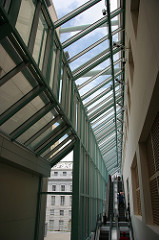An Introduction to Indian Art
An Introduction to Indian Artwork
Artwork has been produced throughout the Indian subcontinent given that 3000BC. To the eye of Western collectors, Indian Art can look hugely ornate. Particularly in comparison to the modern day and contemporary artwork created in America and Europe. Because of this, some may well contemplate Indian Artwork to be an acquired taste. If it is, there is tiny incorrect with this. A lot of of the finer factors in life are only appreciated, as soon as they are actually appreciated. To enjoy something, it should be understood very first. To achieve an understanding of Indian Artwork, 1 need to search on it aesthetically, in relation to the culture and ideological concepts of this various and extremely ritualistic civilization.
Conventional Indian Art is expressive, sensitive, and extremely designed. It portrays a world, which has been relative to the beliefs of the Indian men and women, given that the yr zero. The beliefs of the Indian folks have proven a lot tenacity more than the last two thousand many years. In which situation, their art has also remained as persistent, and constant. Hinduism, Buddhism and Jainism are the 3 major religions in India. Hinduism, also identified as ‘Sanatana Dharma’ (which signifies ‘The eternal law’), is the most dominant. It is also regarded to be the oldest residing religion. Jainism, also referred to as ‘Shraman Dharma’ or ‘Jain Dharma’, is an old Indian Dharma religion. Comparable to Buddhism and Hinduism, the most fundamental philosophy of Jainism is based on self assist, and a progression in direction of a increased degree of spirituality. To pursue the ultimate goal, which is to attain a supreme state a state identified in Jainism as ‘Jina’ (which means conqueror), and identified in Buddhism, as enlightenment. In Hinduism, this is moksha, which signifies ‘freedom’.
All three religions revolve about the conceptual paradox of existence. Primarily based upon these concepts, Indian Art touches on the three essential elements of that existence. That is, our senses sight, touch, smell, taste, and sound and our emotions and inner spirit. Inside of Indian Art, it is all these issues that make our globe. Each and every fusing with the other to make kind. Ancient Indian Artwork swept by way of the far east, alongside Hinduism and Buddhism. Since of this, it grew to become highly influential in Asian Art, particularly in China and Japan. From the thirteenth to the eighteenth century, Indian Artwork became more geometrical. Islam grew to become dominant across India, and the Muslim leaders forbade the portrayal of the human figure, inside of a religious context. As Indian Art is rarely something else, this rule substantially changed the face of Indian Art.
Indian paintings have been discovered in two areas of the Indian subcontinent. The Ajanta caves are a group of thirty caves, positioned in the state of Maharashtra, east central India. They have been very first found in 1819. The Ajanta frescoes are primarily based upon on the Jatakas (the life of Buddha), and reveal the development of Indian Artwork up to about 700AD. This is identified as the ‘Gupta Period’, and is the most traditional period of Indian Artwork. The Ajanta Paintings are explicit in their spirituality, to the level of becoming sensual depicting various portrayals of Buddha, really like scenes and sleeping females.
Conventional Indian Art began to diminish at the finish of the nineteenth century. British rule brought with it Western influences. Consequently, Indian Artwork grew to become a mere imitation of European Art. However, in comparison, this phase was reasonably quick lived. In one hand, British rule had somewhat neutralized Indian culture. Even so, on the other hand, their archaeological studies uncovered numerous ancient examples of Indian Artwork. This, in flip, led to renewed interest in far more conventional, ancient variations. One particular of the foremost universities in India is the Visya-Bharati University. It was founded by Rabingranath Tagore (a painter and the 1st Asian poet to win the Nobel prize for literature), in 1921. The function of the university was to deliver Western and Indian cultures together. Here, Indian Artists experimented with numerous of the early twentieth century art types, such as impressionism and surrealism As nicely as reviving classic Indian Art styles, mostly, these of the Gupta Time period.
Painter, Nandalal Bose, is regarded by several contemporary artwork critics to be amid the ideal twentieth century Artists of India. As a younger artist, Nandalal Bose joined a circle of writers and Artists whose intention was to revive the traditional Indian traditions. His work depicts village life, and Indian mythology. Indian Art has re-established its traditions. Nonetheless, there continues to be a certain essence of the West, within the work. Once yet again, proving artwork does not dictate existence. Life dictates art.





















Leave a Reply